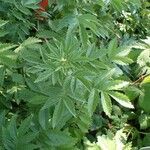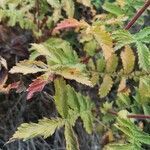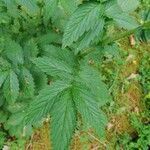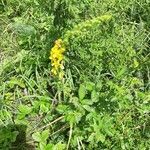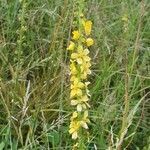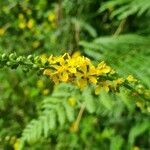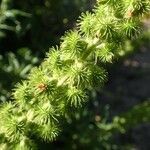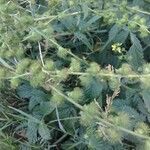Perennial herb. Flowering stems up to 1.2 m high, with long eglandular hairs. Leaves imparipinnate; leaflets of different sizes. Flowers: in elongated, bracteate, terminal racemes; mature hypanthium grooved for 1/2 its length, lowest bristles distinctly deflexed; corolla bright yellow; Dec.-May. Fruit 8 mm long, basal part campanulate, ribbed, densely pubescent, crowned by hooked bristles.
Erect, perennial herb, up to 1.2 m high. Leaves pinnate, leaflets of different sizes. Flowers in elongated, brac-teate terminal racemes. Fruits 8 mm long, basal part campanulate, ribbed, densely pubescent, crowned by hooked bristles. Flowers bright yellow.
